10 Strategies for Your Holiday Email Design
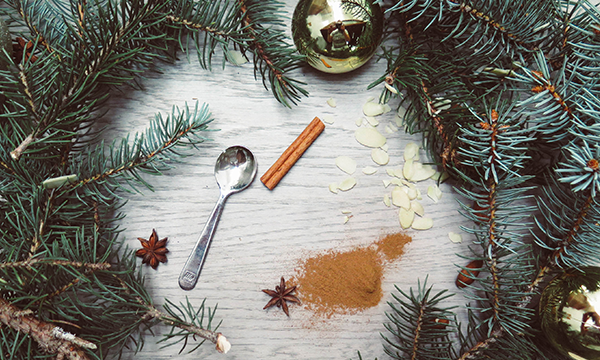
Are your campaigns wow-worthy? We made a list of 10 design tactics every email marketer should use to optimize holiday email design and bump up those opens and click-throughs.
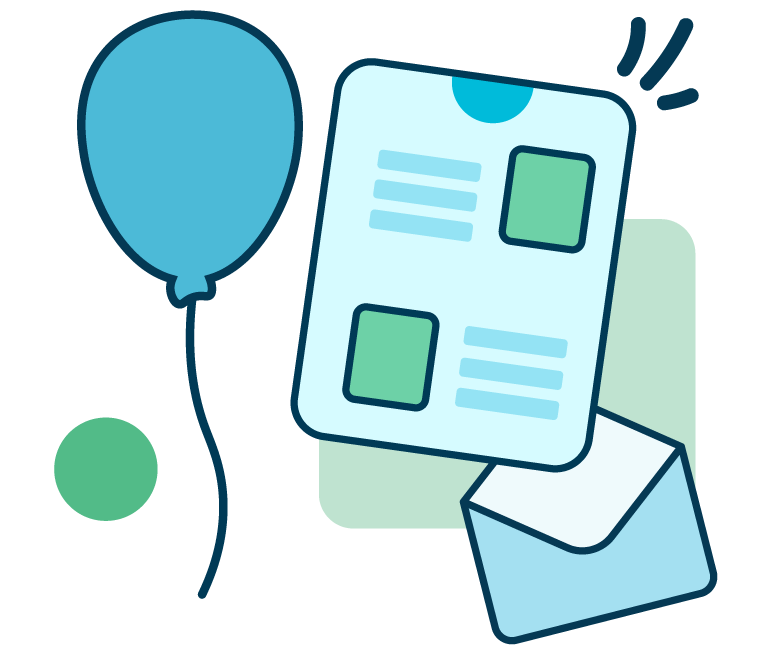
From developing integrations to strategic support, from creating creative concepts to optimizing results.
1. Use text over background images (vs. text built into the image)
Almost every promotional email we receive has some variation of gorgeous photos or illustrations overlaid with text. Here’s an example from an email we just received from clothing brand Everlane:

However, when text is part of an image in a single .JPG or .PNG, the design isn’t optimized for email. Why? If the image doesn’t show up because of image-blocking, the text doesn’t appear either, so your message is lost. Don’t take that gamble this holiday season! The solution is to have plain text on top of a background image, and it’s a new capability we’re now offering for free with the BEE editor. Here’s an example email we built (inspired by a message from Litmus) that has a true background image with plain text on top (illustrated by highlighting part of the text):
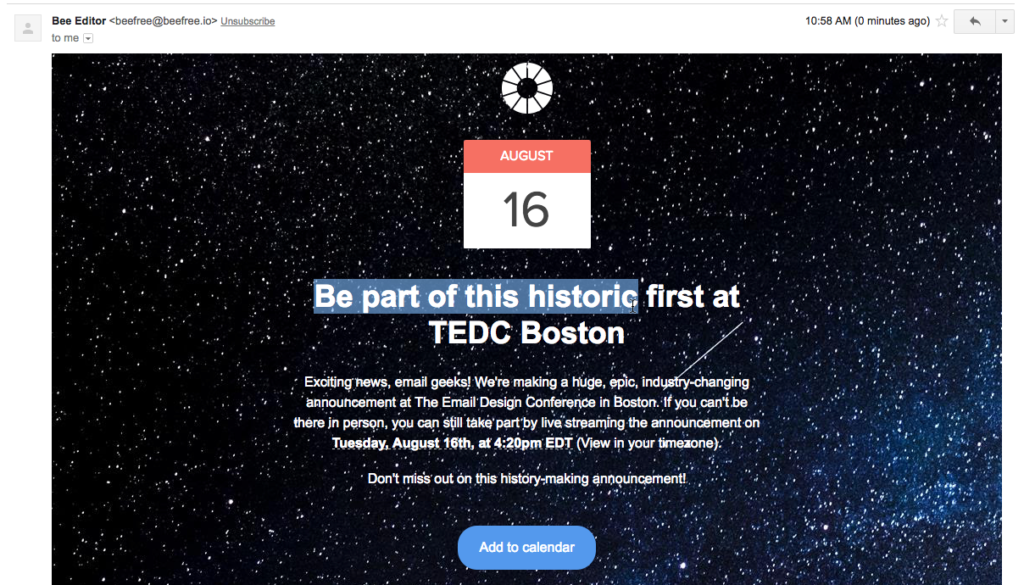
Pretty neat, isn’t it? If the image doesn’t show up, your text still will. Plus, you can add a custom HTML background color to replace the blocked photo. Check out our tutorial How to Add Background Images in Email to start using this technique in your emails now.
2. Prep images for mobile and retina displays
The percent of email opened on a mobile device is often higher than 50% (as shown in this monthly report by Litmus). So it’s no surprise that image rendering on smartphones is a key concern for email marketers. And it’s especially frustrating to find that images on mobile devices can sometimes look blurry. What’s the deal?
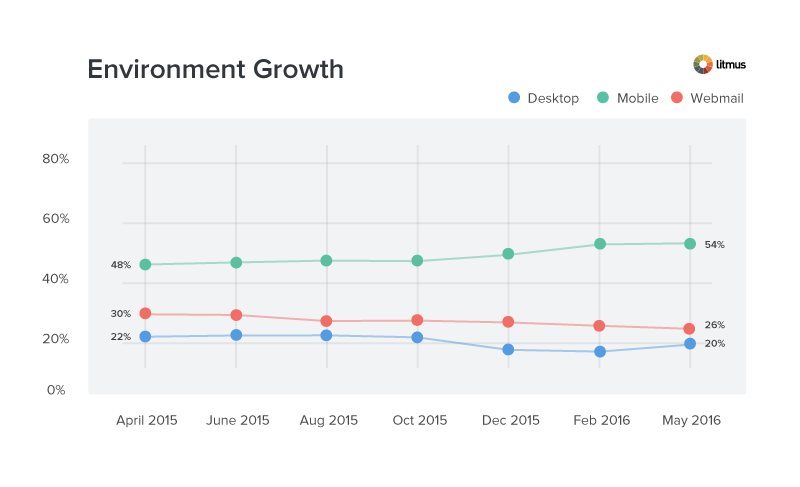
When images scale and shift to smaller screens, the change in display size can result in a fuzzy image. To prevent this from happening, you need to prepare holiday email design images for mobile and retina displays. Here’s what to do:
- Don’t use thumbnails. Use bigger images.
- Compress images to reduce file size.
- Allow your images to adjust to width.
Following these design best practices means you’ll avoid the blurry-image problem.
3. Include simple animation
This season is a great time to add a little extra sparkle to your holiday email design. Simple animated GIFs can make a big difference, and they don’t have to be complicated. Here’s an example from Minted:
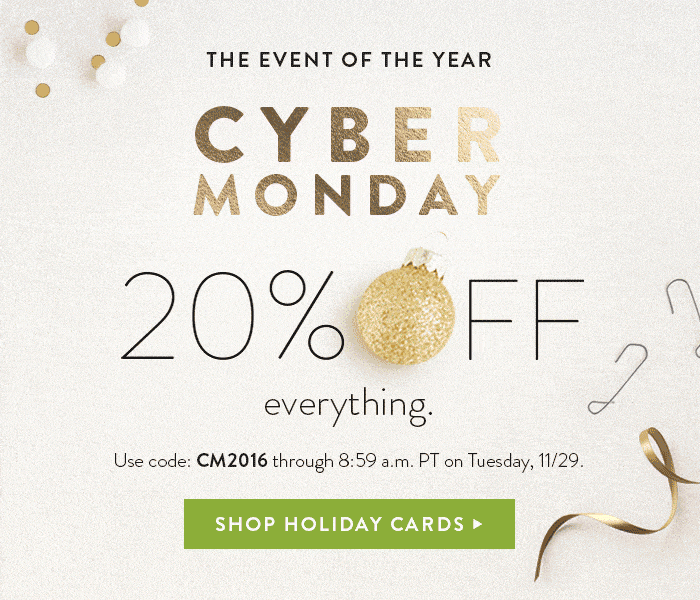
Holiday email design should be fun and festive, and incorporating a GIF can quickly add a sense of levity, delight, and playfulness that’s eye-catching and entertaining. Be sure to check out our Top 4 Tips for Using Animated GIFs in Email to make sure your sends are optimized!
4. Optimize CTA buttons
Call to action buttons: there’s so much to talk about! Size, shape, color, text, position… there’s a lot to consider. If we had to summarize our top recommendations, we’d say this:
- Pick a color that contrasts or “pops” against the background.
- Write a compelling CTA using an action verb in your brand voice. (Never say “Click here.” Be more creative than “Learn more.”)
- Size the button so it’s easy to spot—but not overpowering—within the context of the email.
- Make sure the font is large and easy to read.
- Keep the button simple and modern: avoid gradients, borders, and drop shadows.
- Make the CTA bulletproof so it always appears.
Glossier’s CTA button design always checks off the boxes on our list. Here’s a recent email from the makeup brand:
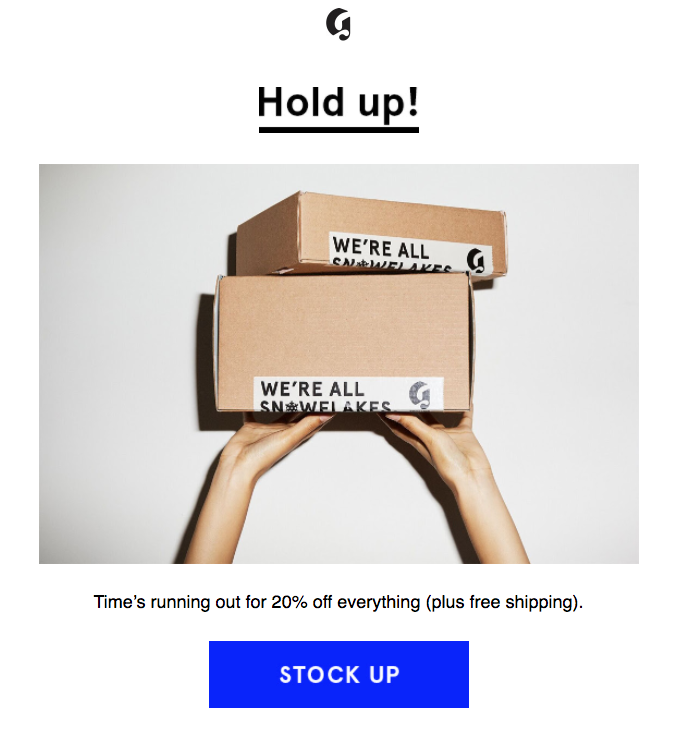
They also employ a technique called the “isolation effect,” which helps that royal blue button stand out.
5. Feature user-generated content
Strengthen a relationship with your community; show readers how their peers are using your product with user-generated content. Here’s a recent example from the shoe company Allbirds. They’ve pulled on-brand photos from Instagram to show their shoes in action.
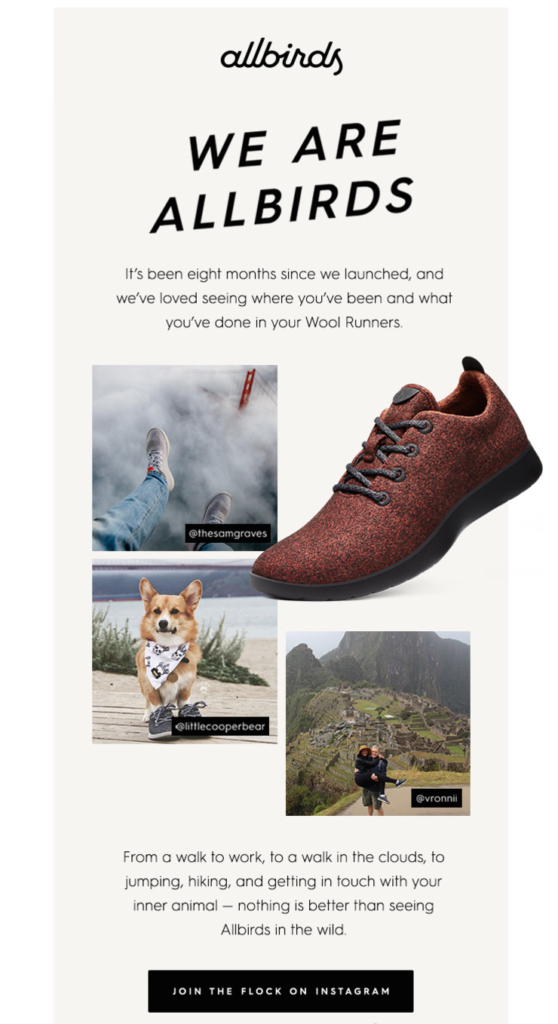
Photos like the ones collected by Allbirds are likely found through a brand-specific hashtag or @-tag, and each photo gives the user credit. By sourcing content from its own audience, Allbirds gets access to great photos without creating them from scratch, and they also send the effective message that the product is popular—even with puppies! This tactic is smart and easy, and almost any brand can try it.
6. Tell a story
Good design means good communication. Your holiday email design should lend itself to good storytelling—an email that has a clear, simple, relevant message. When inboxes are as crowded as they are at this time of year, it’s particularly important to engage readers on a universal, emotional level. One of our favorite quotes from the #LitmusLive conference this year has to do with creating emotion in emails:

A story can take different forms. In just a few lines, J.Crew uses a recent email to tell a story (in just one line) that many of us can relate to: holiday-induced family tension. The story makes us feel like J.Crew “gets it,” and it makes us smile. That’s great brownie points for any brand.
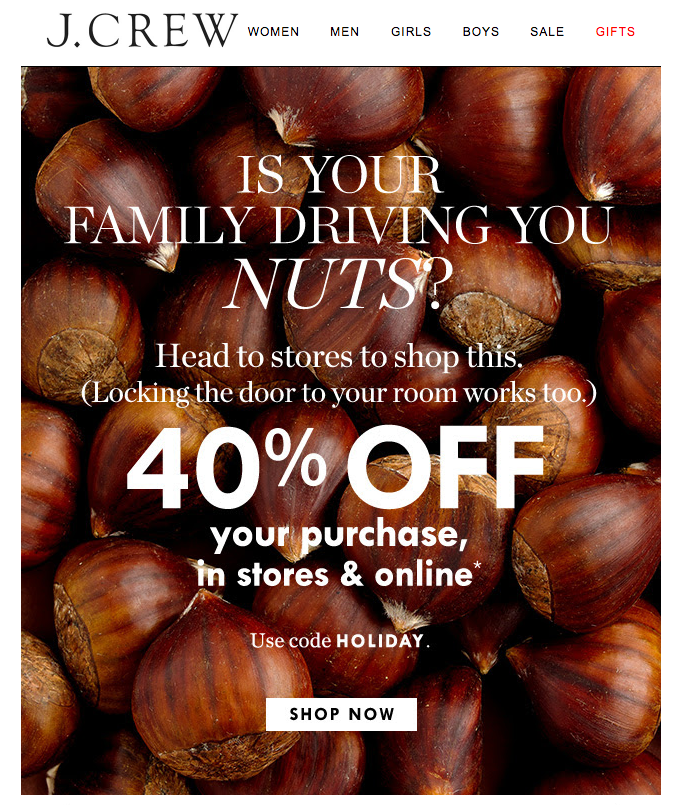
7. Add suspense with a countdown timer
If you’ve never used a countdown timer in emails, the holiday season is the perfect opportunity. There’s plenty to count down to right now: the final days of a sale, the last day for holiday shipping to arrive on time, or another festive promotion you’re offering. Here’s another J.Crew example we like:

If you’re intimidated by countdown timers, don’t be! They’re actually super easy to add to any email. See our quick tutorial on how to add a timer to your email!
8. Choose the right stock images
If you’re short on time or on photo resources, stock images can be a great option. Gone are the days of ugly clip art; today, there are fantastic resources for beautiful stock photos that fit any brand. Fortunately, you can now search for and find free photos directly in the BEE editor. But it’s still important to use any stock images properly. One best practice is to customize stock images to make it your own (as much as your image license permits). This hero image from a Skillcrush email is a great example of how a simple desktop photo is more interesting and brand-relevant with a clean design that has text over it.
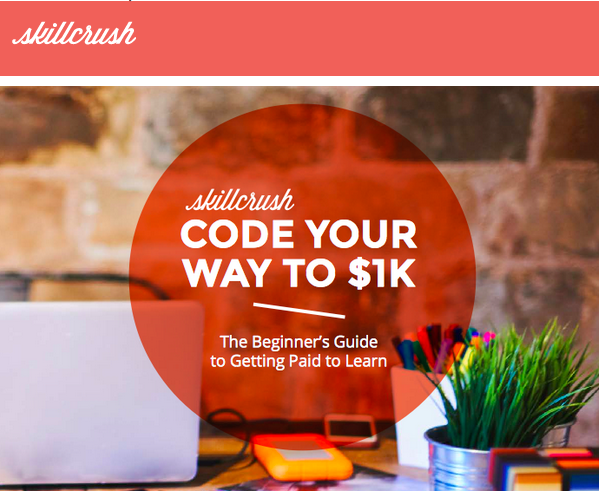
Check out more tutorial tips on how best to use stock photography in your holiday email design: Tips for Using Stock Photos in Email.
9. Make photo collages responsive
Photo collages or galleries are a common sight during the holiday season as brands showcase products. But it’s important to make sure those galleries are mobile responsive, so mobile phone users can get a good look at your product on smaller screens. This email from clothing brand Lunya includes a beautiful example of a clutter-free photo collage that looks great on desktop and mobile. Here’s the desktop version:
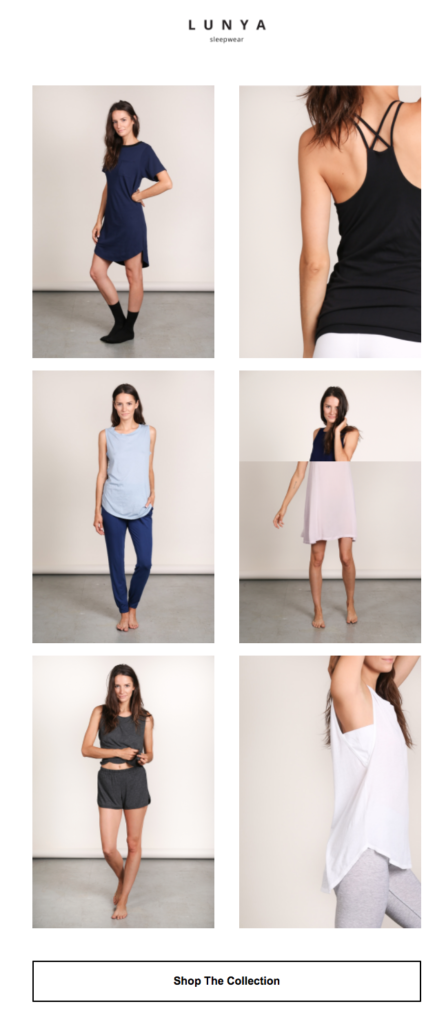
Here’s the mobile-responsive version:
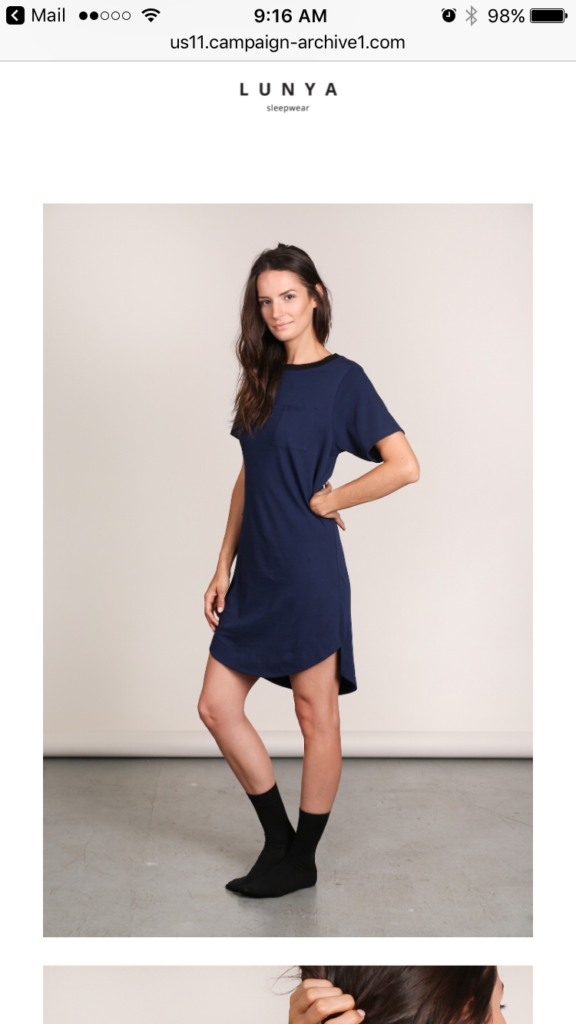
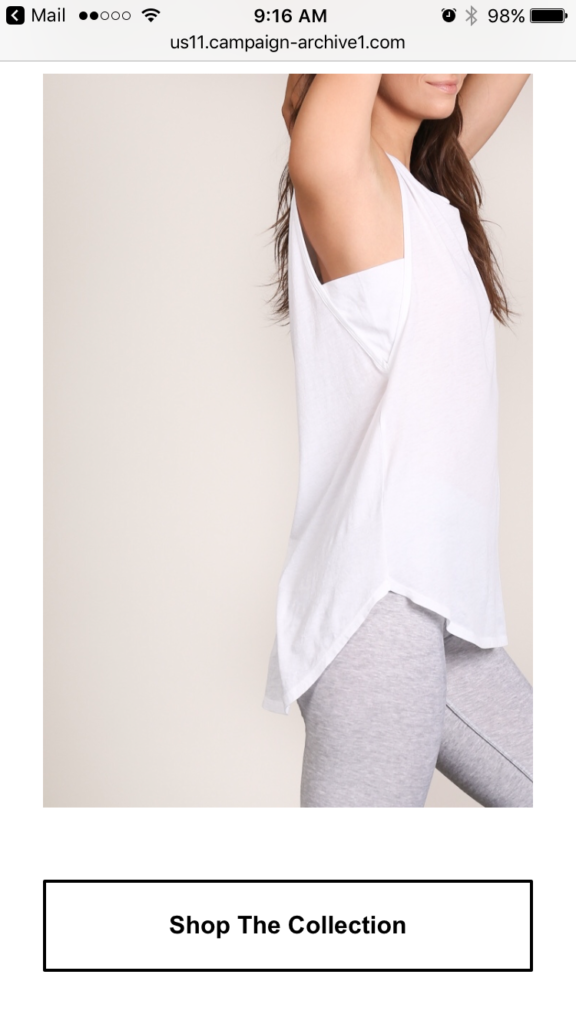
10. Think about the next step in holiday email design
Our final tip is a friendly reminder that your stunning holiday email is just one step in a longer customer path to purchase. Make sure those who click through are greeted with a seamless transition to your site or landing page, where they’re presented with relevant material that matches the email’s visual content We love this #LitmusLive quote from Rebecca Lewis: “It doesn’t matter if your emails look great if your end experience on the site isn’t good.”
We hope you’ll take the suggestions we’ve gifted to you to put together a spectacular holiday email design.